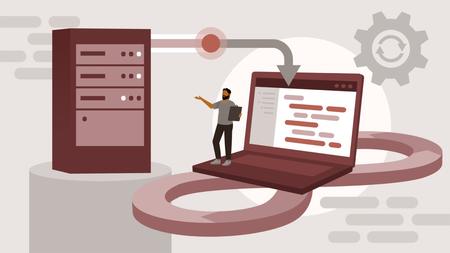
English | MP4 | AVC 1280×720 | AAC 44KHz 2ch | 2h 12m | 437 MB
Infrastructure automation—transitioning an organization’s system administration from hardware into code—is one of the major DevOps practice areas. By automating configuration management, you can make your systems more reliable, processes more repeatable, and server provisioning more efficient. In this course, learn the basics of infrastructure as code, including how to keep your configuration in a source code repository and have it built and deployed just like an application.
Discover how to approach converting your systems over to becoming fully automated—from server configuration to application installation to runtime orchestration. Join notable DevOps practitioners Ernest Mueller and James Wickett as they dive into key concepts, and use a wide variety of tools to illustrate those concepts, including Ansible, Terraform, Docker, Kubernetes, Serverless, and AWS Lambda. Check out this course to gain the knowledge you need to start implementing an infrastructure as code strategy.
Table of Contents
Introduction
1 Make your systems better with infrastructure as code
2 What you need to know
The Wide World of Infrastructure
3 It’s all about the cloud
4 Bare metal vs. cloud
5 Not your mother’s cloud
6 Managed services vs. Bare cloud
7 Containers galore
8 VMs vs. Containers
9 Where’d my server go
10 Serverless vs. Servers
Adventures in Automation
11 Building the boxes and lines
12 Everything vs. Terraform
13 What’s in the box
14 Declarative vs. imperative
15 Everything vs. immutable
Bringing It All Together
16 Provisioning lab overview
17 AWS
18 Terraform
19 Ansible
20 Docker
21 Helm charts
22 Serverless
With Great Power Comes Great Responsibility
23 What is infrastructure as code
24 Continuous integration for infrastructure
25 Testing infrastructure
26 Works on my machine
27 You write it, you run it
28 Automate all the things
29 CI for my IaC
30 The GitOps model
Conclusion
31 Where to go from here
Resolve the captcha to access the links!